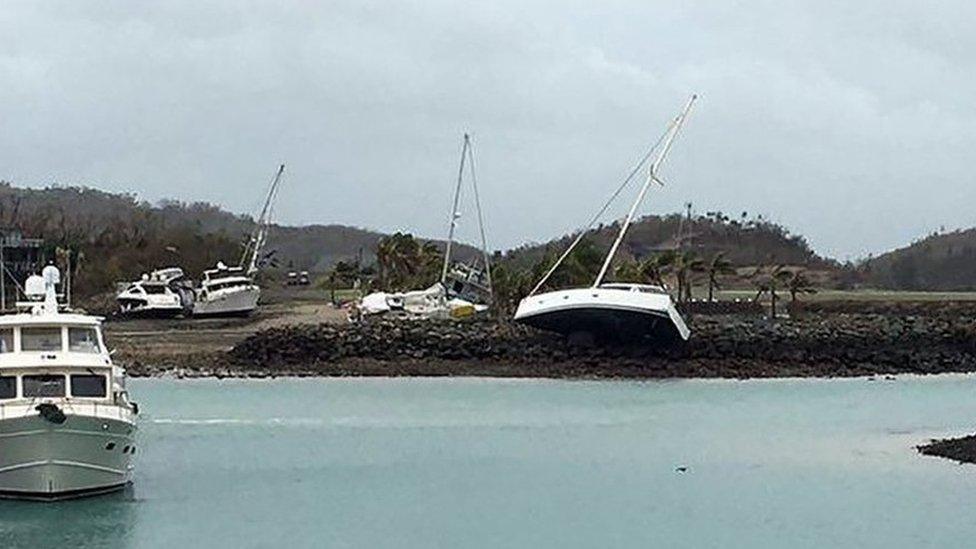Cyclone Debbie: Deaths feared in Australia flood emergency
- Published
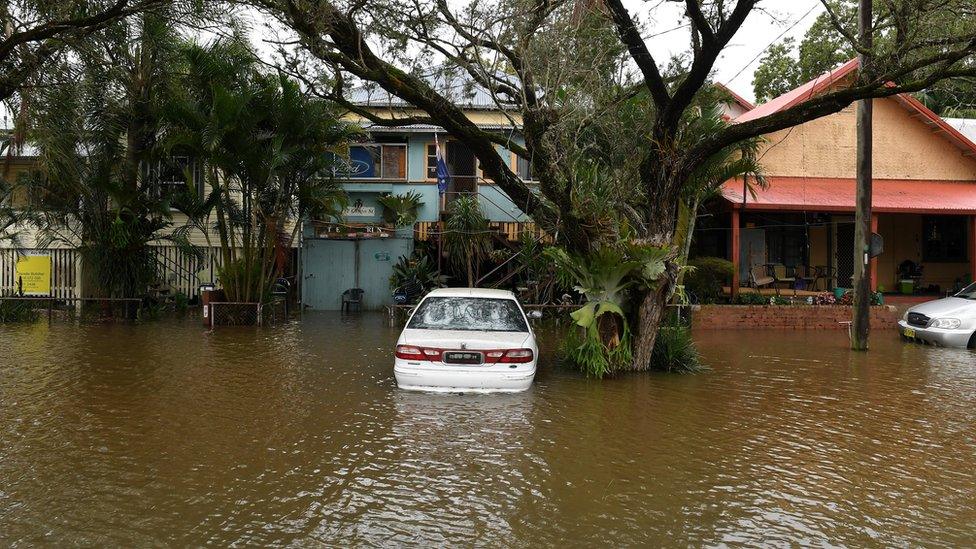
Floodwaters have inundated the New South Wales town of Lismore
Australian authorities fear people may have drowned as a flood emergency grips two states in the wake of Cyclone Debbie.
Tens of thousands of residents have evacuated homes in northern New South Wales (NSW) and southern Queensland.
The storm has moved out to sea after hitting northern Queensland as a category four cyclone on Tuesday.
However, floodwaters continue to rise after some areas had about three times their monthly rainfall on Thursday.
"There could be people overnight that perished in that flood, we don't know at this stage," said Mark Morrow, from the New South Wales State Emergency Service.
"There could be some very distressing news."
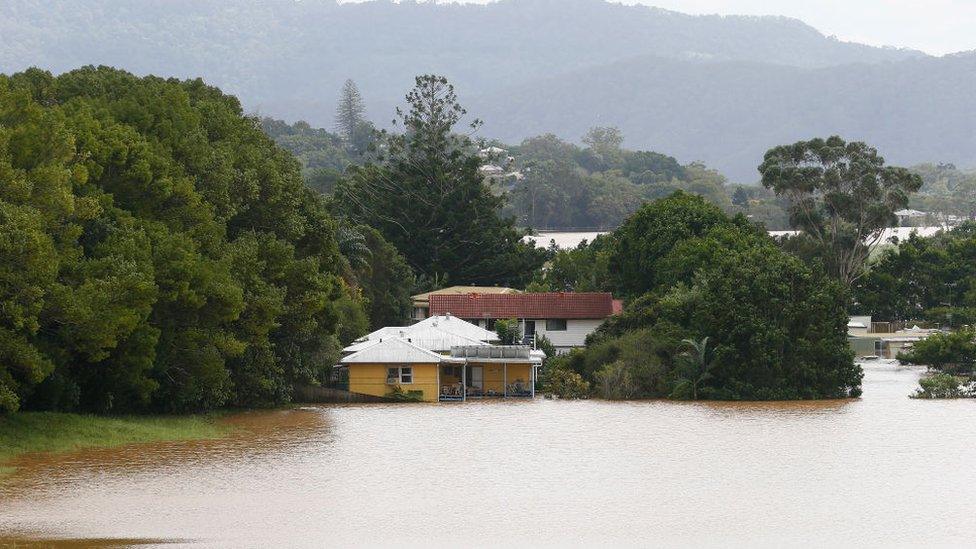
Emergency warnings were issued after several rivers broke their banks
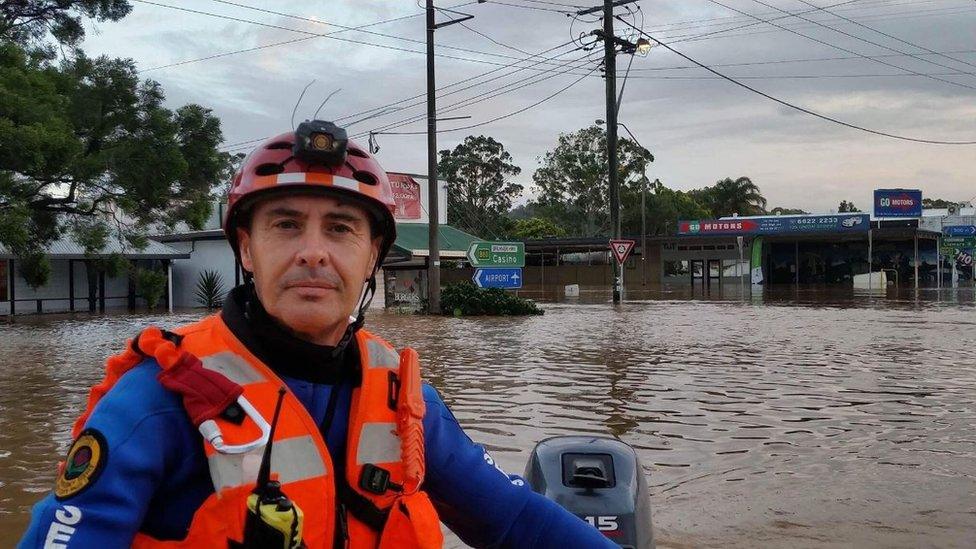
Emergency workers have received many calls for help
Many pleas for help had gone unanswered because it was too dangerous, he said.
The worst-hit areas included Lismore and Tweed Heads in NSW, and the Gold Coast and Beaudesert in Queensland.
Unpredictable situation
"Now is the time to leave. Do not delay. Evacuation orders are mandatory," New South Wales State Emergency Service said on Twitter on Thursday., external
Authorities said flooding in some towns had not yet reached its peak.
In other developments:
More than 2,000 Queensland schools remained closed on Friday due to flooding
About 80,000 people lost power in NSW, adding to tens of thousands without electricity in Queensland
One town, Upper Springbrook, recorded almost 80cm (31ins) of rain on Thursday
Firefighters had "saved the lives" of at least 85 people trapped in floods, Queensland authorities said
Emergency crews may not reach some areas until Saturday, Mr Morrow said
In pictures: Floods ravage towns
The cyclone caused major damage to buildings, roads and crops when arrived on Tuesday carrying winds of up to 260 km/h (160 mph).
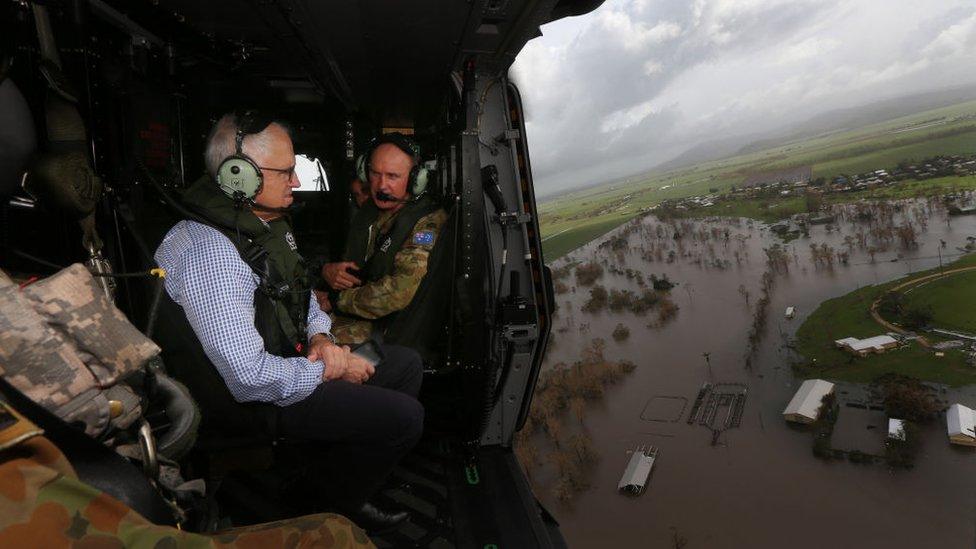
Prime Minister Malcolm Turnbull surveys the cyclone damage from a military helicopter
Tourism operators across Queensland reported cancelled bookings and anticipated long-term disruption to their trade.
Thousands of insurance claims have already been filed, but the state's insurers said it was too early to accurately assess the cost of the damage.
The cyclone is also likely to have damaged the Great Barrier Reef, marine experts warned.
- Published30 March 2017
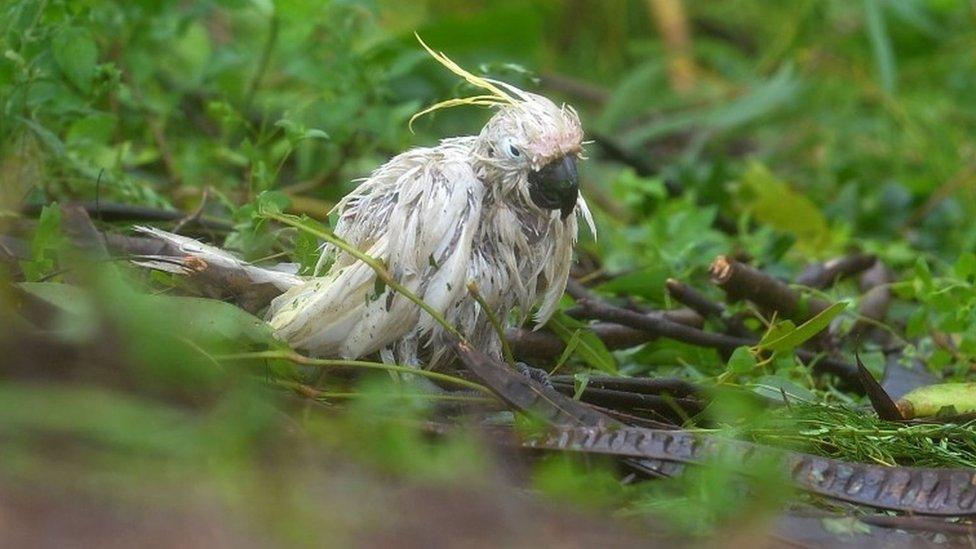
- Published28 March 2017
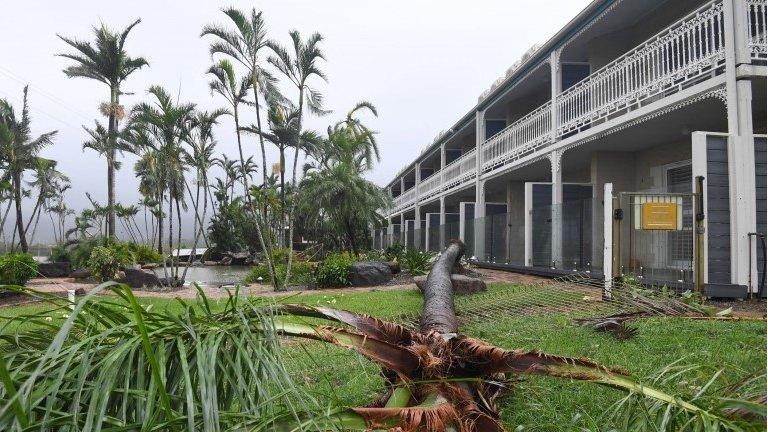
- Published28 March 2017

- Published29 March 2017
